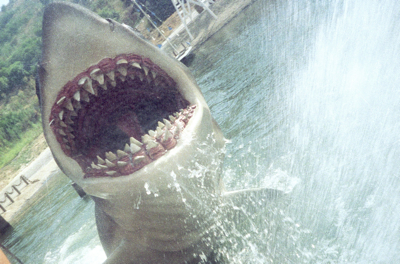This post originally appeared on Kelly Cone’s LinkedIn.
Last night we had a pretty big storm blow through the DFW area. You may have heard about it if you’re from around here. Nothing too crazy this time, but you never know with these spring storms in Texas. Of course, I found myself driving home a bit early to beat the storm and weather it out at home.
On the way though, I started thinking about the irrationality of that decision. I work in a large concrete structure with lots of masonry shear walls and a storm basement. I was arguably safer at the office than at home. Should a tornado hit either location, I’m much better off up here. Of course, my wife might kill me if she and Ada were at home hunkering in a closet while I was up at the office kicking back in a rolling chair and playing human bowling ball with some drawing tubes as the pins. But, marital bliss aside, my survival odds are much better NOT going home.
All this seems like a really good analogy for human nature, and how it plays a role in our industry in inhibiting innovation. (You knew that is where I was going, come on…)
We humans are inherently bad at understanding risk
We just stink at it. Back in “the day” risk (fear) was actually pretty predictable and something that got coded into our DNA and surfaces as an instinctual response (fight or flight). Home (the tribe, the fire, the cave) was usually safe (95% of the time is enough for mother nature) and being out alone away from the group was likely to get you eaten by something bigger and stronger than you. Fast forward thousands of generations. Now, big bad smarty pants that we are, we still have that same fear reaction to things we perceive as “risky”. But, our ability to accurately recognize risk in our complex world hasn’t really caught up to the last thousand years of rapid change. We just suck at it. Examples abound:
 Most people are more afraid of being attacked by a shark than they are of being struck by lightning. However, it is estimated that over 10,000 people a year are killed by lightning compared to well under 100 killed by sharks. So…yeah. Strike 1!
Most people are more afraid of being attacked by a shark than they are of being struck by lightning. However, it is estimated that over 10,000 people a year are killed by lightning compared to well under 100 killed by sharks. So…yeah. Strike 1!
(Get a kick out of this list: http://natgeotv.com/ca/human-shark-bait/facts)- Most people are more afraid of flying than driving. However, The National Safety Council has odds-of-dying tables for 2008 that calculate the odds of dying in a motor vehicle accident to be 1 in 98 for a lifetime. For air travel the odds were 1 in 7,178 for a lifetime, according to the table. So, strike 2!
- And, yesterday I chose to drive home at the same time as every other storm crazed driver in a rush to get home to my wood-framed pier-and-beam house surrounded by huge oak trees to hunker down for a storm that might have spawned tornadoes and large hail. I was way more likely to get killed on that drive than I was by the storm BTW. Strike 3. We’re out.
There is no getting over it, we are really bad at accurately understanding risk and making rational decisions based on that information. Fear is an instinctual thing and our first instinct is to back up against a wall and and brandish our spear/rock/fist or run home as fast as we can. As someone championing change and innovation, that is a problem for me because change is scary and people are afraid of it whether they should be or not.
So, what can we do about it?
Well, we can get better about understanding and explaining the real risks to our actions or in-actions. It is an important part of our jobs, like it or not.
Is adopting BIM risky for a firm that hasn’t yet made the switch? Yes. Of course. The first few projects will not hit their margins. Training and software costs will increase. This will put a financial strain on any organization. But, what is the risk of not doing it? A steady decline in business as more owners demand it. Challenges retaining talent as young, bright employees want to work for more progressive firms that leverage cool technology. E&O risk from using technology and processes that have been proven to be more risky than what can be delivered with BIM. The first is a short-term risk that can be calculated and planned for. The second is a long term existential risk for the same firm. Yet, we know there are literally thousands of smaller and medium sized firms in every state and country still holding fast to 2D processes.

This shouldn’t scare you.
For those of us in the architectural profession, is integrating with a developer, owner, contractor or a subcontractor risky? Of course. Cultures are different, business models are different, will Design still be valued? We can all think of hundreds of gotchas and risks. But, how risky is it really compared to staying a stand-alone Architecture firm in today’s market? I’d argue that the risk to single-service firms in the commercial and industrial markets is existential in the same way. It might take 20 years to get there, but your firm is on the path to a crisis.
More and more firms are integrating vertically, and those firms can deliver things that stand-alone firms can’t. Faster schedules or lower costs up front, or higher quality… Like most of those firms, the one I’m at is still working out the details on how to do things really well and really differently, but the better we get at it the bigger the difference is. We can already do things that set us apart and give a competitive advantage. The more firms like us integrate, the stronger that advantage will grow. My background is Design with a capital D, but I wouldn’t choose willingly to be at any stand-alone design firm now. It is just too risky to not change how we create buildings. The prevalent business model we have now is just too broken, too fractured, too perverse, and too stagnant to survive forever.
If you’re not changing, you’re the guy playing golf in a lightning storm convinced you’re safe because you’re not out in the ocean with those deadly sharks. Come swimming sometime, it’s a lot safer than you think. Plus, fishing is way more fun than golf…
Kelly Cone is Innovations Director at The Beck Group in Dallas, TX.






